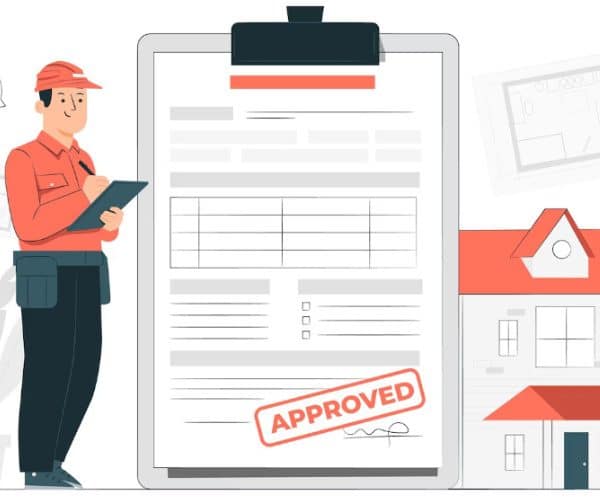Forklifts are vehicles that are used in warehouses or other storages to lift heavy products. Sometimes, they automate the process and eliminate the need for labor.
There are several types of forklifts, each designed for a different purpose. Let’s explore the many types below.
Types of Forklifts

The following are the main types of forklifts:
Reach Forklift
Reach forklifts are mostly used in small warehouses with narrow aisle space. They have a horizontal platform and a mast with two outer legs at the base. This helps the forks to distribute the load while lifting heavy products.
These forklifts are popular for being reliable and compact. This means that instead of large forklifts, many businesses can invest in these small ones which can do the same job.
Clamp Truck
Clamp trucks are specialized forklifts with clamps instead of forks. The clamps are there to firmly hold products instead of just placing them on forks to be lifted.
Clamp trucks are mostly used by businesses dealing with products with irregular shapes that are difficult to lift with other forklifts. For example, the paper industry used clamp trucks to lift heavy paper rolls.
The diameter of these rolls can span multiple feet and have the tendency to roll off the forks if handled using a normal forklift. With clamp trucks, these rolls are in a firm grip and can be lifted safely.
Articulated Forklift
Articulated forklifts are also designed for smaller warehouses with narrow aisles. In other forklifts, the forks can move up and down.
In articulate forklifts, the forks can also move right and left even if the truck doesn’t move. This means that the truck can remain still while the forks perform operations even in a narrow aisle space.
Articulated forklifts are also used in cold storage.
Side Loader Forklift
Side loader forklifts are highly adaptable and flexible equipment in a warehouse. In this, the forks are present perpendicular to the truck’s body and the truck can be rotated at the right angle while unloading or carrying the products.
Some side loader forklifts can have twomodels, man up and man down. In man up, the operator remains close to the load and in man down, the operator can change the direction of forks while being on the ground.
Counterbalance Forklift
Counterbalance forklifts are bigger in size, which restricts their mobility but are ideal for lifting heavy products. These forklifts come in two models, three-wheeler and four-wheeler.
The name counterbalance comes from the weight that is placed at the rear of the truck to balance the heavy products that are lifted. The legs/arms of this forklift provide stability to the whole structure.
Another feature of counterbalance forklifts is that they have forks in the front that can move directly to lift the product
Turret Forklift
A turret forklift is a type of counterbalance forklift. In this, there is an articulating base that can rotate at 180 degrees. These forklifts are suitable for warehouses with high racks.
They can also have an in-built navigation system that allows them to know if there are obstacles on the way. These forklifts also have two masts; front mast and main mast.
Benefits of Using Forklifts in Warehouse Operation

Below are mentioned some major benefits of using forklifts for warehouse operations:
Lift Heavy Products
The biggest benefit of using a forklift is that heavy products can be lifted safely. This is why forklifts are ideal for businesses that deal with heavy products because employing labor to lift these products isn’t feasible.
Not just heavy products, it is also safe to lift a large amount of such products at the same time using an appropriate forklift.
Operational Efficiency
Forklifts can perform a number of tasks. This creates efficiency in operations. This is why before purchasing a forklift, businesses should create a list of their operations.
Then, according to this, the forklift should be purchased.
Maximum Space Utilization
Using only the floor space isn’t a feasible way to operate a warehouse. It is important to utilize the vertical space and for that forklifts are essential.
To lift and position products on pallets, a tool is required. Manual labor is not a practical solution for this. Forklifts can easily lift and load products on the pallets and place them in high storage racks, thus making maximum use of warehouse space.
Reduced Labor Cost
Businesses can save on labor costs by purchasing a forklift. As mentioned above, lifting heavy products in a short period may become a challenge for labor.
But a forklift can do this job with ease if it remains within its lifting capacity. This means that businesses need a single trained operator to handle the forklift, and not a team to manually lift/carry products.
Fewer Accidents
One of the biggest benefits of using forklifts is that they can save employees from serious injuries. If labor is lifting heavy products every day, chances are that their physical health may suffer.
Other than that, one wrong movement can cause serious accidents. With forklifts and properly trained operators, products can be lifted safely without threatening employee safety.
Businesses can benefit from forklifts if they keep some general factors in mind before making the purchase.
Also, explore about Inventory Management System
Factors to Consider when Purchasing a Forklift for the Warehouse
Here are the factors that can help businesses in purchasing the right forklift:
Operational Versatility
Operational versatility is an important factor to consider before purchasing a forklift. This is because versatility is one of the many reasons forklifts are so widely used in warehousing.
There are forklifts designed for specific operations and there are those that can perform multiple operations. Businesses should purchase the one that fulfills their operational requirements.
Lifting Capacity
The next factor to consider is the lifting capacity of the forklift. This is especially crucial for warehouses that store a high volume of heavy products.
These warehouses require forklifts that can safely load such products.
Cost
Cost is another factor that businesses should consider when purchasing a forklift
The other reason is the safety and convenience that forklifts provide. All these reasons are solid grounds for paying even a little high price.
Conclusion
Forklifts are specially designed tools to lift and transport heavy products while maintaining safety in warehouses. Not only this but using these vehicles can reduce the time of operations that would normally take longer if done manually.



